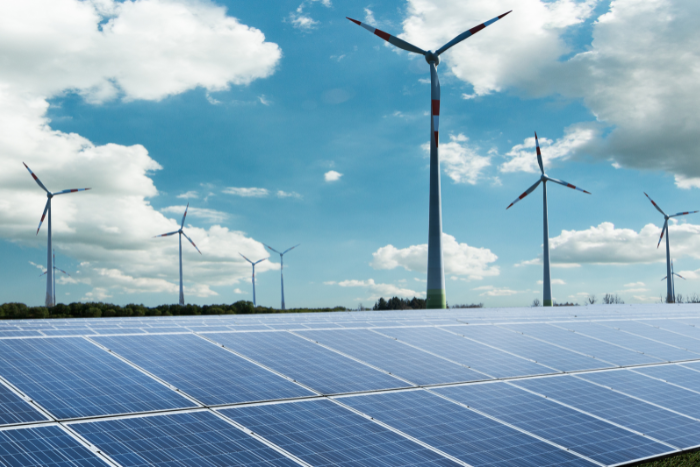India needs between $190 billion and $215 billion investments in the next seven years to meet its 500 gigawatts (GW) RE by 2030 target, ratings agency Moody stated. An additional $150 billion to $170 billion will be required for the expansion and enhancement of electricity transmission, distribution, and energy storage systems. Strong growth in India’s renewable energy capacity will continue, but coal will remain a major power source over the next 8-10 years, Moody’s Abhishek Tyagi said to TOI.
India is expected to invest around ₹1.5 lakh crore in data centres over the next 5-6 years, boosting the country’s digital infrastructure capabilities, the report said. Government policies and regulatory frameworks have assisted in increasing the share of renewable energy to about 43% of India’s total power capacity mix in fiscal 2023 and 2024, contributing significantly towards the country’s 2030 transition targets and its 2070 net-zero ambitions, the report stated.
Investment in clean energy to rise 10 times as much as fossil fuels in 2024, but not enough to meet 2030 target: IEA
Investment in low-carbon electricity will rise to 10 times as much as fossil fuel power this year, according to a new report from the International Energy Agency (IEA). Global investment in clean energy including renewables and nuclear power, as well as electric vehicles, power grids, energy storage, low-emissions fuels, efficiency improvements and heat pumps is expected to reach $2 trillion this year. Global clean-energy investment topped fossil fuels for the first time in 2023 and is likely to be double the $1 trillion forecast for coal, gas and oil in 2024.
Countries have a significant opportunity over the coming months to develop clear plans for boosting renewable power that could help move the world closer to achieving the COP28 goal of tripling global capacity by 2030, the report titled ‘COP28 Tripling Renewable Capacity Pledge: Tracking countries’ said. The report added that while renewable power is at the heart of achieving international energy and climate goals, very few countries have explicitly laid out 2030 targets for installed capacity in their existing Nationally Determined Contributions, or NDCs, under the Paris Agreement. The targets are not yet in line with renewable energy target for 2030, IEA said.
‘Overcapacity’: China solar manufacturers seek state action to halt freefall in prices
Chinese solar panel manufacturers want the government to curb investment and industry collaboration to stop fall in prices of solar cells and modules, as the industry faces overcapacity, ET reported.
China accounts for about 80% of global module capacity. It is expected to add up to 600 gigawatts (GW) this year, enough to meet global demand through 2032. But price fall and competition is pushing smaller producers into bankruptcy. Rapid capacity additions drove down prices of China’s finished solar panels by 42% last year. At least eight companies suspended over 59 GW of new production capacity, equivalent to 6.9% of China’s total finished panel production capacity in 2023, to avoid overinvestment, China Photovoltaic Industry Association (CPIA) said.
The Asian Photovoltaic Industry Association said industry profits had plunged 70% due to overcapacity and falling prices, while exports were curbed by trade barriers imposed by the United States.
Meanwhile in Europe, the overcapacity issue in China’s solar panel industry has “led European manufacturers to shut down factories and seek support from policymakers” as the solar panel prices dropped by 50% in the past Nikkei Asia reported.
Floating solar global study: 10% surface area coverage can meet 16% of country’s power demand
A new study explores the potential for floating solar power on lakes around the world. Assessing more than 1m water bodies worldwide, the researchers estimate a total global potential of almost 15,000 terawatt hours. The findings suggest that, with a “conservative” 10% surface area coverage, floating solar photovoltaics could contribute an average of 16% of the “electricity demand of some countries, thus playing an important role in decarbonising national economies”.
About The Author
You may also like
Non-Fossil Fuels Generates One-Third of India’s Electricity in 2025
India on track to achieve 2030 clean energy target
India to add 45GW solar capacity in FY 2026: Study
Government Proposes for ALMM Expansion for Solar Backward Integration
China’s renewable energy expansion can fuel global energy transition: Report

